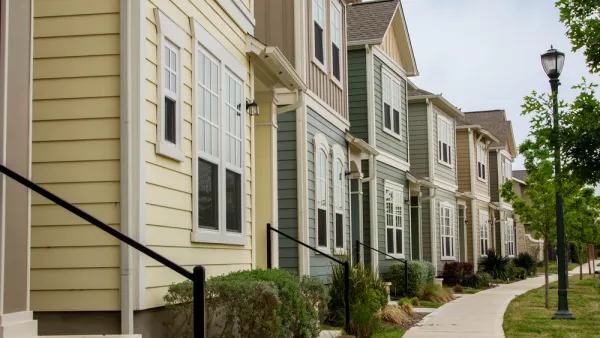Land acquisition makes up 15 to 20 percent of the cost of an average home in the Austin area.

In an article for The Real Deal, Andrew Terrell outlines the city of Austin’s HOME Initiative, which takes aim at housing affordability via density and other zoning and land use changes.
As Terrell explains, “The first phase, approved in December, allowed the construction of up to three homes on single-family lots and streamlined the approval process, making it more accessible and cost-effective for developers. Since it took effect, 160 applications for 300 housing units have been filed, and more than 100 of these applications have been approved.”
Terrell adds that not all neighborhoods are eligible for immediate new development, noting, “Projects in Wildland-Urban Interface zones or areas deemed vulnerable to displacement in the University of Texas’ Uprooted Report, which identifies gentrification and displacement, will face delayed application processes to allow for additional review and consideration of potential impacts on sensitive areas of the city.”
With land acquisition making up 15 to 20 percent of the cost of a home in the Austin area, reducing lot sizes could save over $60,000 on the cost of an average home.
FULL STORY: Will Austin’s YIMBY lot-size reductions create affordable housing?

National Parks Layoffs Will Cause Communities to Lose Billions
Thousands of essential park workers were laid off this week, just before the busy spring break season.

Retro-silient?: America’s First “Eco-burb,” The Woodlands Turns 50
A master-planned community north of Houston offers lessons on green infrastructure and resilient design, but falls short of its founder’s lofty affordability and walkability goals.

Delivering for America Plan Will Downgrade Mail Service in at Least 49.5 Percent of Zip Codes
Republican and Democrat lawmakers criticize the plan for its disproportionate negative impact on rural communities.

Test News Post 1
This is a summary

Test News Headline 46
Test for the image on the front page.

Balancing Bombs and Butterflies: How the National Guard Protects a Rare Species
The National Guard at Fort Indiantown Gap uses GIS technology and land management strategies to balance military training with conservation efforts, ensuring the survival of the rare eastern regal fritillary butterfly.
Urban Design for Planners 1: Software Tools
This six-course series explores essential urban design concepts using open source software and equips planners with the tools they need to participate fully in the urban design process.
Planning for Universal Design
Learn the tools for implementing Universal Design in planning regulations.
EMC Planning Group, Inc.
Planetizen
Planetizen
Mpact (formerly Rail~Volution)
Great Falls Development Authority, Inc.
HUDs Office of Policy Development and Research
NYU Wagner Graduate School of Public Service





























